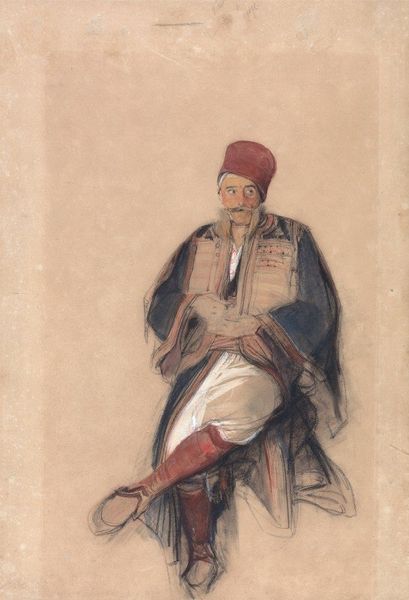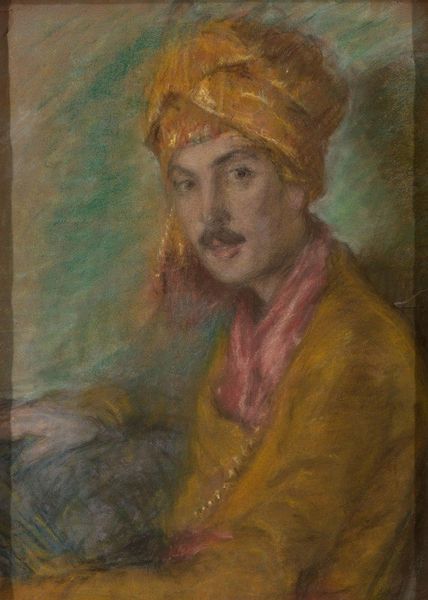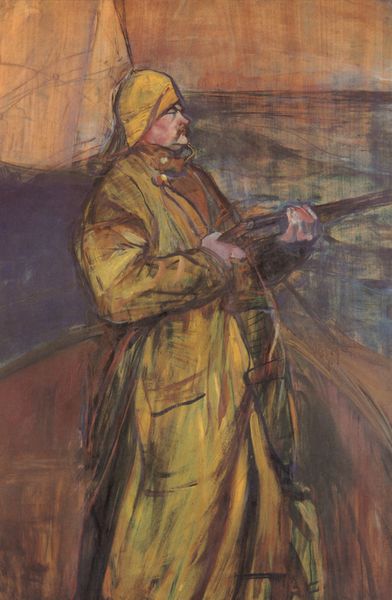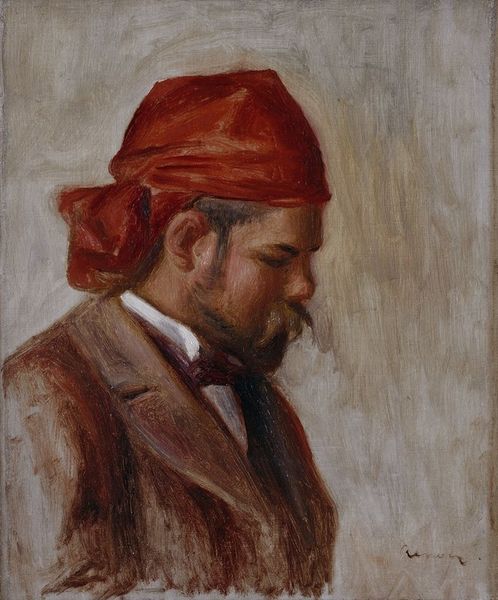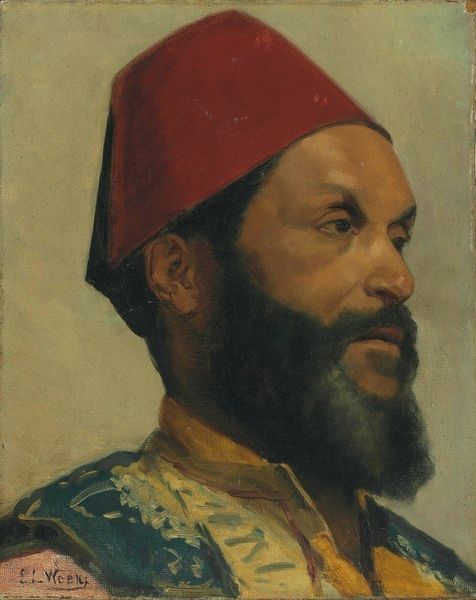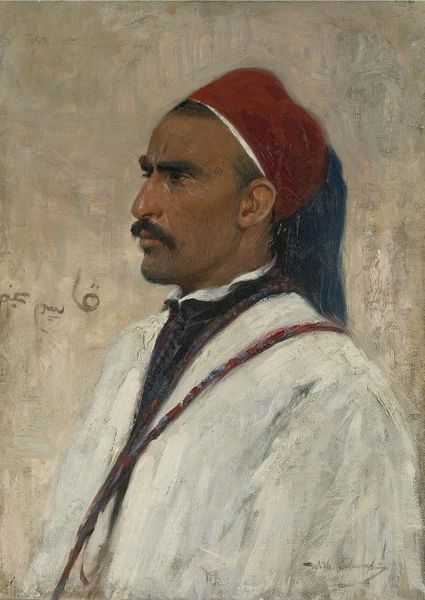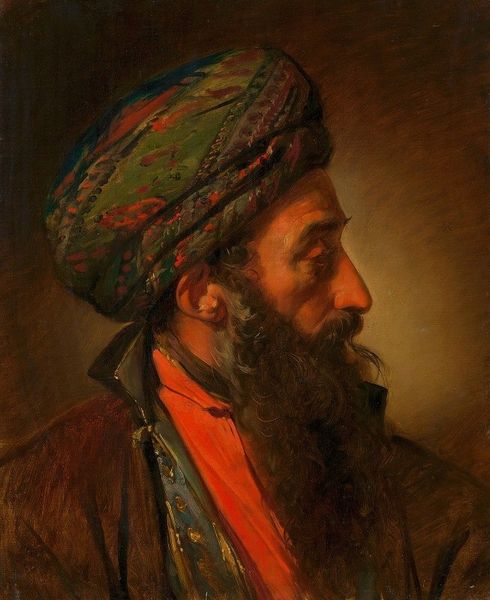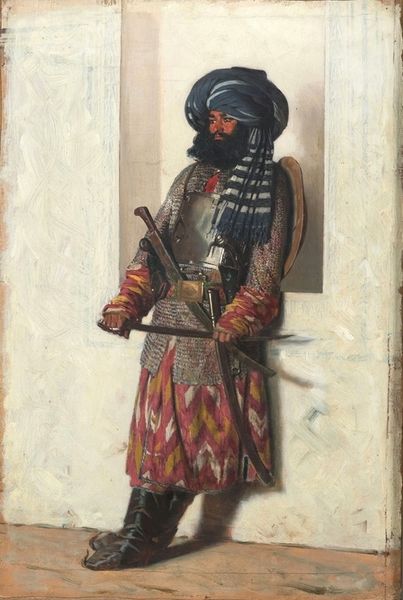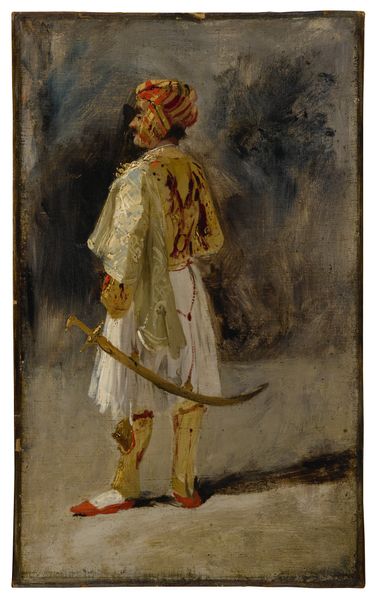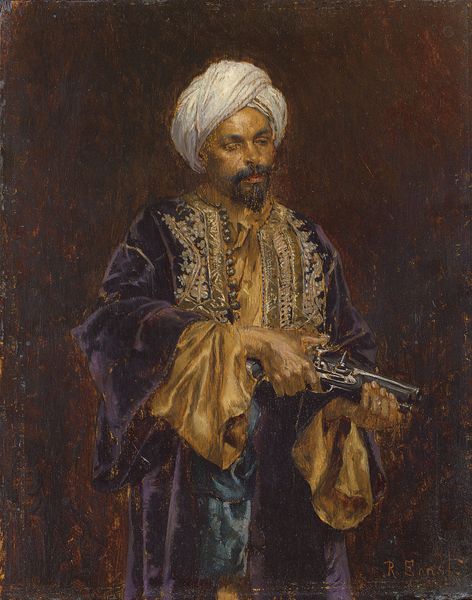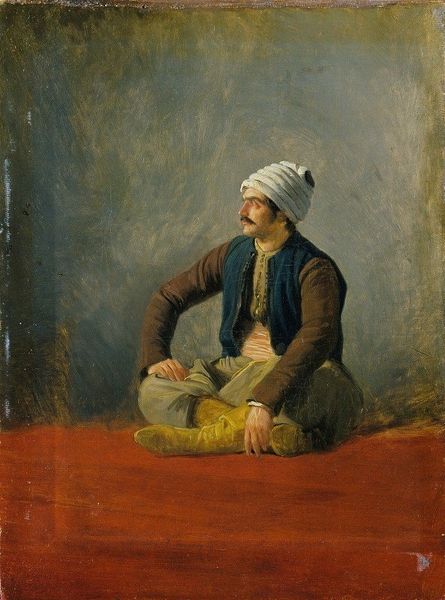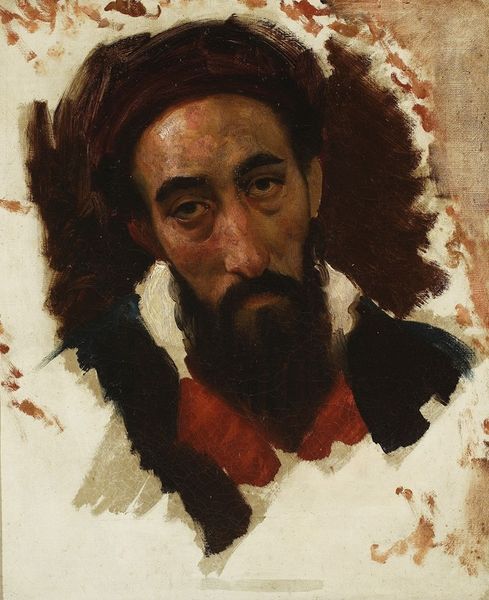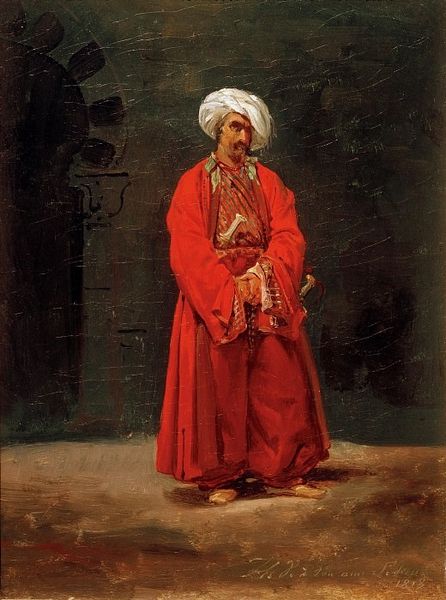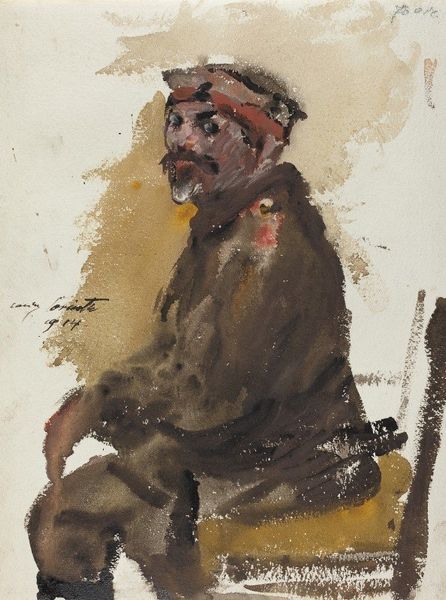
drawing, paper, watercolor, pencil
#
portrait
#
drawing
#
figurative
#
figuration
#
paper
#
oil painting
#
watercolor
#
underpainting
#
romanticism
#
pencil
#
portrait art
#
watercolor
#
realism
Copyright: Public Domain: Artvee
Editor: Here we have John Frederick Lewis’s “Portrait of General Jochmus Pasha,” circa 1841. It's a watercolor and pencil drawing on paper and, to me, the most striking aspect is the contrast between the detailed facial features and the looser treatment of the clothing. What's your perspective on this portrait? Curator: This piece is intriguing because it highlights the complexities of cross-cultural encounters and power dynamics of the 19th century. Lewis was known for his Orientalist paintings, often depicting scenes from the Middle East. But seeing a portrait of a General under Ottoman service forces us to think about identity, service, and the construction of the "Orient" through a Western lens. How does Jochmus's garb— the fez, the cloak— speak to this construction? Editor: I see your point. The exotic attire, rendered with such detail, emphasizes his "otherness," perhaps reinforcing a colonial gaze. But do you think there’s also an element of respect in Lewis's portrayal, considering Jochmus's rank? Curator: It's a nuanced relationship. Lewis clearly admired the aesthetics, but it’s crucial to ask: to what extent is this admiration complicit in larger structures of domination? Think about the market for these kinds of images in Europe at the time—what did they signify for audiences back home? And whose stories are we *not* hearing? Editor: That’s a good point; considering it in its time certainly shifts my perspective. Curator: Exactly. This portrait prompts us to critically examine the dynamics of representation, the market forces that shaped artistic production, and the silent voices within historical narratives. How might we read this image alongside other depictions of non-European figures from this period? Editor: I'll definitely consider that in my research; it adds so much depth to how I initially saw the work. Curator: And it's through that critical engagement with history and power that we can truly appreciate, and challenge, the complexities of art.
Comments
No comments
Be the first to comment and join the conversation on the ultimate creative platform.
